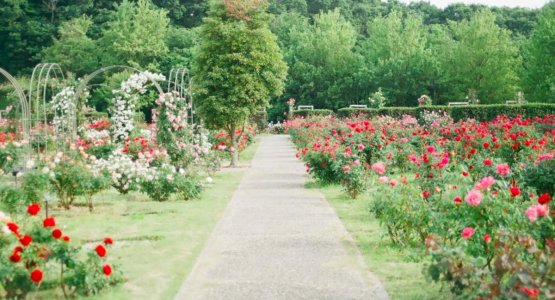The underrated layout secret that turns average gardens into stunning showpieces
- Replies 0
A beautiful garden doesn’t just happen by chance.
Whether the look is wild and whimsical or precise and polished, what happens below the surface—planning, structure, spacing—can quietly determine how successful and satisfying your garden becomes.
It’s not about copying a professional’s blueprint.
It’s about using a few simple tricks to make your outdoor space easier to manage and more rewarding to grow in.
Gardens come in many forms. Some people prefer a structured look with crisp rows and perfect spacing. Others embrace the freedom of a slightly chaotic or companion-planted patch. But for those who enjoy symmetry, structure, and maximizing limited space, a few easy strategies can bring that polished look without the need for expensive tools or expert landscaping.
Planting from seed is a budget-friendly, productive way to grow crops like radishes, beets, turnips, and kohlrabi. But let’s face it—spacing those tiny seeds evenly is easier said than done.
That’s where the seed square comes in. This clever tool is typically a one-foot square plastic grid with holes set at equal distances. You place it on your garden bed and push seeds through the holes.
The result? A structured garden without guessing games.
Spacing seeds about two to three inches apart—just like the packet recommends—is made easy with this method. Drop two or three seeds in each hole to increase germination odds. Once they sprout, simply thin out the weaker seedlings.
Don’t want to buy a seed square? Make your own. All you need is a 12x12 piece of cardboard.
Draw your grid, punch holes in your chosen pattern, and even paint the surface for durability and visibility.
You’re not limited to one vegetable per square. A single garden bed can include multiple types of seeds using this method, each laid out in neat, symmetrical patterns. Whether you change the layout from square to square or dedicate whole sections to specific crops, your garden will still look tidy and balanced.
Even a little variety between sections keeps things fresh without losing structure.
Starting with seedlings instead of seeds? That brings its own advantages. With plants already grown a bit, it’s much easier to see the spacing and keep lines straight.
Also read: These signs will tell you if your plants are begging for more sunlight!
Forget about the seed square for this one—the holes are too small. Instead, grab a yardstick, a PVC pipe, or any straight edge. Use it to draw light lines across the soil to create a grid. Then simply plant along the guidelines.
Keeping your layout consistent gives a finished look once everything matures.
Instead of mixing vegetables haphazardly, try grouping them in visual blocks. Each crop gets its own section, which can be sized based on how much you plan to harvest. The directions of your rows don’t need to match throughout. Just keeping the spacing clean within each group will help maintain the tidy feel.
It may sound overly organized, but a simple sketch of your planned garden can prevent a lot of confusion. Mapping out where each crop will go can ensure you don’t overfill the bed and helps you avoid crowding taller plants where they’ll block the sun.
Also read: Transform your garden for spring with this $4.99 ALDI gadget—even cheaper than Home Depot!
And yes—it can still look beautiful while being completely practical.
Read next: Do your supermarket plants always die? Here’s what experts want you to know

Got your own layout trick? Love your garden messy or neat? Let us know how you keep your space thriving—and let’s help each other grow better, smarter gardens this season.
Whether the look is wild and whimsical or precise and polished, what happens below the surface—planning, structure, spacing—can quietly determine how successful and satisfying your garden becomes.
It’s not about copying a professional’s blueprint.
It’s about using a few simple tricks to make your outdoor space easier to manage and more rewarding to grow in.
Gardens come in many forms. Some people prefer a structured look with crisp rows and perfect spacing. Others embrace the freedom of a slightly chaotic or companion-planted patch. But for those who enjoy symmetry, structure, and maximizing limited space, a few easy strategies can bring that polished look without the need for expensive tools or expert landscaping.
Planting from seed is a budget-friendly, productive way to grow crops like radishes, beets, turnips, and kohlrabi. But let’s face it—spacing those tiny seeds evenly is easier said than done.
That’s where the seed square comes in. This clever tool is typically a one-foot square plastic grid with holes set at equal distances. You place it on your garden bed and push seeds through the holes.
The result? A structured garden without guessing games.
Spacing seeds about two to three inches apart—just like the packet recommends—is made easy with this method. Drop two or three seeds in each hole to increase germination odds. Once they sprout, simply thin out the weaker seedlings.
Don’t want to buy a seed square? Make your own. All you need is a 12x12 piece of cardboard.
Draw your grid, punch holes in your chosen pattern, and even paint the surface for durability and visibility.
You’re not limited to one vegetable per square. A single garden bed can include multiple types of seeds using this method, each laid out in neat, symmetrical patterns. Whether you change the layout from square to square or dedicate whole sections to specific crops, your garden will still look tidy and balanced.
Even a little variety between sections keeps things fresh without losing structure.
Starting with seedlings instead of seeds? That brings its own advantages. With plants already grown a bit, it’s much easier to see the spacing and keep lines straight.
Also read: These signs will tell you if your plants are begging for more sunlight!
Forget about the seed square for this one—the holes are too small. Instead, grab a yardstick, a PVC pipe, or any straight edge. Use it to draw light lines across the soil to create a grid. Then simply plant along the guidelines.
Keeping your layout consistent gives a finished look once everything matures.
Instead of mixing vegetables haphazardly, try grouping them in visual blocks. Each crop gets its own section, which can be sized based on how much you plan to harvest. The directions of your rows don’t need to match throughout. Just keeping the spacing clean within each group will help maintain the tidy feel.
It may sound overly organized, but a simple sketch of your planned garden can prevent a lot of confusion. Mapping out where each crop will go can ensure you don’t overfill the bed and helps you avoid crowding taller plants where they’ll block the sun.
Other design choices that elevate the entire garden
- Pathways matter
It’s easy to overlook, but leaving walking space between rows or blocks makes harvesting and watering simpler. Even just a few stepping stones or narrow strips of bare soil help. - Go vertical
Trellises, cages, or ladders aren’t just space-savers. They give visual height and help support vining crops like cucumbers, peas, and beans.
Also read: Transform your garden for spring with this $4.99 ALDI gadget—even cheaper than Home Depot!
- Add visual texture
Contrast broad-leaf plants with more delicate ones. Mix colors and plant heights to break monotony and keep your garden lively to look at. - Plan for the whole year
Some crops thrive early in the season (like lettuce and peas), while others love heat (like tomatoes and peppers). Still others are perfect for fall (like kale and carrots). Staggered planning can keep your garden going strong for months.
Mistakes to avoid—even if you're excited to get planting
- Don’t overcrowd
Tempting as it is to pack in every seedling, overcrowding hurts airflow and increases disease risk. - Mind your sunlight
Plant taller crops toward the north side of the bed. This prevents them from casting shadows over shorter plants. - Don’t forget to rotate
Growing the same vegetables in the same spot each year exhausts the soil and draws in pests. Rotating plant families each season helps keep the soil healthy.
And yes—it can still look beautiful while being completely practical.
Read next: Do your supermarket plants always die? Here’s what experts want you to know
Key Takeaways
- There’s no one-size-fits-all layout for gardens—both structured and wild designs can work, depending on your style.
- A seed square helps achieve perfect spacing for crops like radishes, turnips, and beets—either store-bought or homemade.
- Gardeners using seedlings should rely on visual guides like PVC pipes or yardsticks to maintain neat rows or blocks.
- Mixing up patterns, using companion planting, and thinking seasonally can elevate your garden’s look and productivity.







